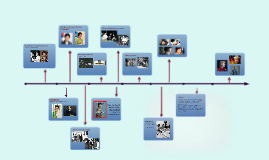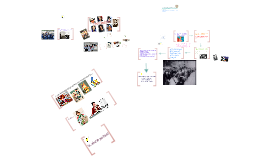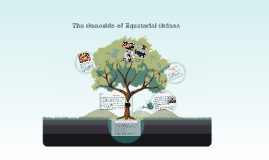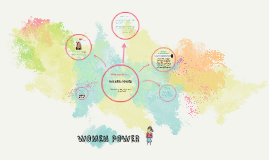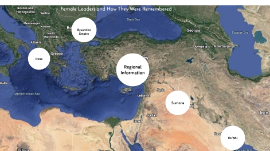Women and Power Presentation
Transcript: Female Leaders and How They Were Remembered The Women of Power in the Near East: Due to the competitive nature of the Near East, dynasties often did not last long as a military force was employed to overthrow the current ruler. As a result, it was nearly impossible for women to find a place in power. Typically, women were seen as an extension of man’s power and were often only granted this right when the king required assistance or was on leave in battle. Consequently, women had little authority and relied on ideological power to gain any control in government. In the case of both the Sumerian civilization and the Byzantine Empire, women were expected to act indirectly. Often in these civilizations, women were granted some level of leniency when it came to representing their children or another male in their family. Still, ultimately they were never allowed to exert their power officially. By looking into these civilizations, we hope to examine how feminine power found its way to the surface and what marks were left behind by these women after their reigns ended About the Region Regional Information Sumeria Sumeria Due to the geographic location of Mesopotamia, the region was largely decentralized and nearly impossible to unite because of the two rivers that divided it. It was extremely difficult to reach different areas of the region on foot and the lack of unification drove competition to extreme heights. Additionally, since Sumeria was separated into many individual city-states, kingships were often overthrown by invasions from neighboring areas. It was very typical for kings to be selected as a result of this force and the resulting ideological power they managed to acquire. Ultimately, this political system left very little room for female rule or influence. Queen Pu’abi takes us to the city-state of Ur in circa 2450 BCE, one of the first examples of a society that we are able to analyze. Though very little is known of her rule, the large burial sites that were uncovered by archaeologist Sir Leonard Woolley in 1922 offer us many insights. Also referred to as the “great death pits,” her and the accompanying male king’s tombs reveal much about Pu’abi’s status in Ur and the ideological power she had likely acquired due to the material wealth and lives that were sacrificed to be buried with her in her tomb. However, comparing her burial site to the King’s reminds us that women were never able to exceed a man’s power. Pu'abi Pu'abi Uncovered by archaeologist Sir Leonard Woolley in 1922, the Great Death Pit consists of two ancient tombs dating back to circa 2450 BCE.4 In the excavation, Woolley discovered the remains of these tombs that he determined to be the burial sites for a woman, Pu’abi and a man, likely to be her accompanying ruler and potential husband. From the remains, he resolved that Pu’abi was the queen of the city state of Ur, and the man likely the king.3 The king’s burial tomb was guarded by six soldiers and accompanied by seventy other bodies in addition to an “immense wealth of goods”.2 In the other tomb, five soldiers appear to have been guards, but only fifty two attendants were buried with her body. This difference is an evident display of how women were not valued as equal when compared to a man, regardless of their individual influence.1 In addition to these attendants, Puabi was found buried with and wearing a large amount of jewels and other determinants of wealth, suggesting her status in society. However, the sheer amount of attendants that were murdered to be buried with Puabi reveal key insights into her rise to power. During this time, sacrificial burials were typically seen during the origins of a kingship. The fact that these attendants were willing to sacrifice their lives to be buried with their king and queen show their reverence for their rulers and their devotion to their reign. Furthermore, egyptologist Kara Cooney explains that the practice of sacrificial burials typically ends when a kingship is firmly established, and so this must have been early on in the dynasty.1 Additionally, the fact that Puabi was buried with less than the king implies that she was largely an extension of his power, a common symptom of the times. Royal Cemetery Artifact 1 Vidale, M. (2011). PG 1237, Royal Cemetery of Ur: Patterns in Death. Cambridge Archaeological Journal,21(3), 427-451. Since very little textual evidence exists into the life and reign of Puabi, it is difficult to determine what she accomplished during her rule. However, focusing on the society she came to power in, the fact that she came into power at all is a great feat. At the time, and with respect to the competitive nature of the Mesopotamian region, women were granted little to no power and had almost no chance of attaining it. Puabi reveals one of society’s earliest power dynamics and her tomb signifies the wealth and status she had accumulated throughout her life.1 We can assume that she was considered a queen of Ur upon






